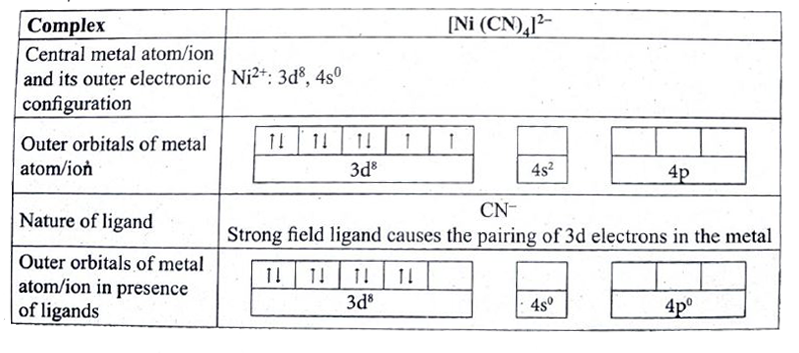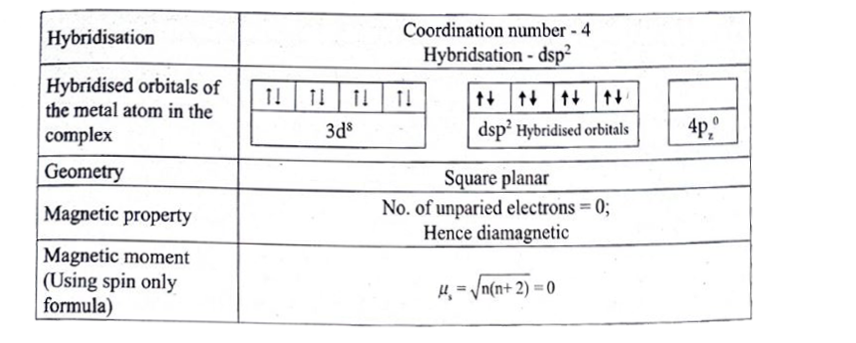Explain the hybridisation, geometry, magentic property and magnetic moment of [Ni(CN)4]2− using valence bondy theory.
Text Solution
|
Topper's Solved these Questions
- COORDINATION CHEMISTRYBook:FULL MARKSChapter:COORDINATION CHEMISTRYExercise:Additional Question(3 Marks Question)
Explore 20 Videos
- CHEMISTRY IN EVERYDAY LIFE Book:FULL MARKSChapter:CHEMISTRY IN EVERYDAY LIFE Exercise:ADDITIONAL QUESTION ( 5 Mark Questions )
Explore 2 Videos
- ELECTRO CHEMISTRYBook:FULL MARKSChapter:ELECTRO CHEMISTRYExercise:ADDITIONAL QUESTIONS -5- MARK QUESTIONS
Explore 15 Videos
Similar Questions
Knowledge Check
Assign the hybridisation, shape and magnetic moment of K2[Cu(CN)4]
Asp3, tetrahedral, 1.73 BMBdsp2 square planar, 1.73 BMCsp3, tetrahedral, 2.8 BMDdsp2, square planar, 2.8 BMThe geometry, hybridization and magnetic moment of [Ni(CO)4] are …. .. And … respectively.
Atetrahedral, sp3, zeroBaquare planar sp3,√3Ctetrahedral sp3,2√2Dsquare planar dsp2. Zero
Define ligand. Explain the magnetic properties of [Ni(CN)4]2−
View SolutionThe geometry, hybridization and magnetic moment of [Ni(CO)4] are …. .. And … respectively.
View SolutionOn the basis of valence bond theory, explain geometry, nature of hybridisation, magnetic property and optical isomerism of [Co(ox)3]3−and[CoF6]3−.
View SolutionState the geometry and magnetic property of tetracarbonyl nickel (0) according to the valence bond theory.
View SolutionExplain with the help of valence bond theory, the geometry and magnetic nature of [MnCl6]4−
View SolutionWrite the hybridisation type and magnetic behaviour of the complex [Ni(CN)4]2−. [Atomic number of Ni = 28]
View Solution


